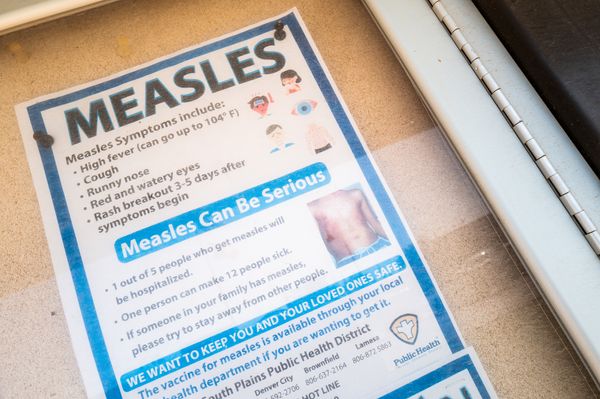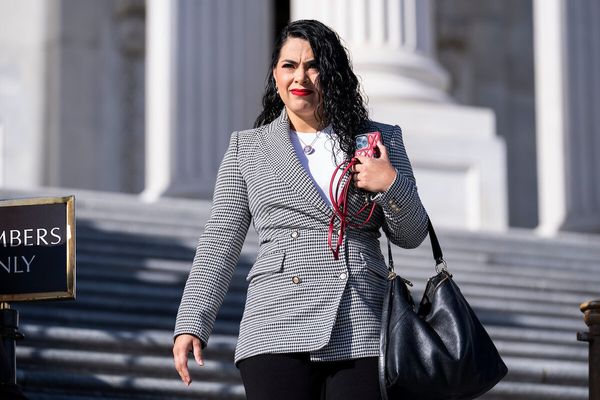
“My last film was on the US and the Holocaust,” documentarian Ken Burns told an audience in Washington recently. “I didn’t think the next film would be about eugenics too.”
That next film is The American Buffalo, a two-part, four-hour series exploring how the national mammal helped sustain Native Americans on the Great Plains for millennia – only to be nearly wiped out by white settlers in little more than a decade.
The documentary quotes historian Dan Flores as saying: “There is no story anywhere in world history that involves as large a destruction of wild animals as happened in North America – in the western United States in particular – between 1800 and about 1890.”
For the colonisers, the destruction of the buffalo came with the “added benefit” of killing Native Americans – not a formal policy but a widely articulated one.
The American Buffalo tells of an Eden where for 10,000 years the buffalo – the biggest land animal in the western hemisphere, known by scientists as Bison bison – had coexisted harmoniously with Indigenous people who killed some for food and shelter but also revered them.
By the early 19th century there were an estimated 30 million buffalo. The population declined due to drought, a lucrative buffalo robe trade, diseases introduced by domestic cattle and the relentless westward expansion of the US.
Then came the railways of the early 1870s. Demand for buffalo hides to be used in the belts in industrial machines, brought thousands of hide hunters to the Great Plains, slaughtering the animals and leaving their carcasses to rot on the prairies.
In little more than a decade the number of bison went from between 12 million and 15 million to fewer than a thousand. By 1900 it had nearly gone the way of the woolly mammoth.
Dayton Duncan, who wrote the series and a companion book, Blood Memory: The Tragic Decline and Improbable Resurrection of the American Buffalo, says on camera: “It is a heartbreaking story of a collision of two different views of how human beings should interact with the natural world and there’s a tragedy at the very heart of that story.”
The prolific Burns, whose back catalogue includes studies of Baseball, Country Music, The Dust Bowl, Jazz and The National Parks, first had the idea to focus on buffalo 30 years ago but other projects got in the way.
In an interview backstage at a recent screening, the 70-year-old says: “We knew that by studying the buffalo we would be able to see from a different perspective, a kind of reverse engineering, the biography of the interrelationship between Native peoples that has gone on for 600 generations and at best six generations among Europeans and Americans.
“If you need an operation and one doctor has performed it 600 times and another doctor’s performed it six times, which one would you take? These people have had 600 generations of experience with this and white people at best have had six.”
He continues: “It was something to say that the animal’s at the centre of an American experience, one that we tend to gloss over. We see it as a logical extension of our Declaration of Independence that we get the whole continent without any sort of real consideration of the calculus of what would take place, not just to Native peoples but to the animal that they revered and that made the Great Plains in the 19th century such a spectacularly diverse place, literally until it wasn’t.
For millennia, Burns notes, tribes including the Kiowa, Comanche and Cheyenne of the southern plains and the Lakota, Salish, Kootenai, Mandan-Hidatsa and Blackfeet from the northern plains “used every part of the buffalo from the tail to the snout and even the snort because the buffalo sounds went into rituals that had to do with their spirituality and creation. And here in the space of a blink of an eye tens of millions of them are exterminated. That causes tribes to starve and be made more docile and be moved on to reservations.”
The 1887 Dawes Act sought to break up reservations and tribal lands by granting land allotments to individual Native Americans and encouraging them to take up agriculture. But the land in question included desert lands unsuitable for farming, many Native Americans did not want to farm and those who did want to farm could not afford the tools, animals and seed to get started.
But the second episode of The American Buffalo considers efforts to save the species from extermination, highlighting the contributions of everyone from Theodore Roosevelt and the Texas cattleman Charles Goodnight to Latatí and Michel Pablo on the Flathead reservation in Montana.
Burns comments: “What the end of the film suggests is that there is the beginning of the rematriation of buffalo. The moving it out of federal custody into Native American sovereignty and then going into the various tribes and reintroducing it as a sustainable thing.
“It’s all about their own food sovereignty, too, because their diet has been horrible and they’re suffering from obesity and diabetes. The buffalos are leaner and better meat and one that they historically know. It’s a real story of resilience.”
He adds: “It is a parable of de-extinction, which may be valuable as we consider climate change and the hundreds of species that are going to go out of existence. We may be providing a model of what that might be like to change but at the same time we also have the idea of reconnecting people with the animals that they’ve been severed from for 150 or 200 or 250 years, depending on how far away from the Great Plains you are.”
Recent books such as The Rediscovery of America: Native Peoples and the Unmaking of US History by Ned Blackhawk and The Hidden Roots of White Supremacy and the Path to a Shared American Future by Robert P Jones have made the case that Native stories have been erased too long and that American history did not begin in either 1776 or 1619.

Julianna Brannum, a member of the Quahada band of the Comanche Nation of Oklahoma, served as consulting producer on The American Buffalo while W Richard West Jr, a Southern Cheyenne and founding director of the Smithsonian National Museum of the American Indian, was the senior adviser. Burns felt it important to put Native voices at the centre of this film – and the next.
“I’m doing a history of the American Revolution right now and we’re not subscribing to any particular theory. We’re subscribing to what actually happened and our American Revolution film actually begins with a Native American: we realise you know how valuable our land is and that you want it.
“Americans like to play up that it’s a story about taxation and representation. It is about that but it’s also about Indian land. For the big speculators like George Washington and Benjamin Franklin, it’s tens of thousands of acres. For an ordinary family from Scotland or Wales that hasn’t owned a piece of property in a thousand years, doesn’t know what ownership is, it’s just getting a little patch of land that they can farm or whatever on and that’s hugely important to them.”
Burns has made The Civil War, The War (about the second world war) and The Vietnam War but now finds that history itself has become a battlefield, with far-right Republicans defending Confederate statues, banning books or, in Florida, approving new standards that teach some Black people benefited from being enslaved.
“Authoritarians want to control the narrative,” Burns says. “People who are democrats have an ability to tolerate the complexity and the undertow of democracy because the alternative is so bad and that bad alternative is always in play. Jefferson says in the Declaration, all experience has shown that mankind are disposed to suffer while evils are sufferable, meaning the human experience has been under authoritarian rule and we’re suggesting something new and that’s hard.
“It’s an extra effort of citizenship, which is something new in the world. It isn’t just subject ship, it’s citizenship, which is a much more active and difficult thing to achieve. It’s inevitable in complicated times people will look for simplistic answers and simplistic people who are going to tell you that it’s this and your children shouldn’t be exposed to this and shouldn’t be upset by history and then all of a sudden you’re the Soviet state or you’re the National Socialists in Germany in the early 1930s.”
Burns’s The US and the Holocaust, a study of America’s inadequate response to the Nazis’ persecution and mass murder of Jews, climaxed with recent images of white supremacy in America and the storming of the US Capitol by a mob of Donald Trump supporters on 6 January 2021. But he does not regard himself as a didactic film-maker.
“When you make films advocating a particular point of view then you’ve got an agenda. You’ve already become an argument and all we do is argue. The only thing that changes people is storytelling. If you tell a story then it’s either going to change somebody not at all, fundamentally or more often than not just at the edges and imperceptibly and maybe even enough so people will take it.
“I do feel it would be nice to help arm people with a sense of what’s taking place so that they can address for themselves what role they may or may not want to take in the next step, the third act, which would be: do we have the courage and the will to create places big enough to have an ecosystem where the buffalo can be run without fences?”

Burns has been issuing warnings about the domestic threat to democracy since a commencement address at Stanford University in California in June 2016. With Trump leading opinion polls for the Republican presidential nomination despite 91 criminal charges, the danger remains clear and present.
Burns says: “I’ve always identified historically the three great crises as the civil war, the Depression and world war two but none of them called into question the peaceful transfer of power, free and fair elections, the independence of the judiciary – all of which has happened. It’s a real existential threat for the United States and the world. The Russians are now diving into our elections to see if they can influence voters about Ukraine.
“History actually makes you paradoxically hopeful because you’ve seen it before in some way, shape or form. The problem right now for the United States is just unprecedented because never have we seen a person espousing these views who had reached the highest office in the world and publicly is espousing such racist and at times antisemitic views.”
When Joe Biden was sworn in as president in January 2021, he declared that democracy had prevailed. It is a theme he has continued to invoke since. Burns comments: “He’s been a surprising bulwark. He’s got an extraordinary administration. More than 300 pieces of bipartisan legislation. Nobody knows it because the other guy is such a loud thing.”
Is Biden, 80, too old? “No, he’s incredibly lucid. He’s smarter than the rest of us because he’s not paying attention to it as we’re saying. ‘Oh, too old.’ When did we suddenly decide that our elders, people who have experience, are bad? He’s incredibly wise.”
The American Buffalo is now available to watch on PBS in the US with a UK date to be announced







